
 |
Home | Lhotse References | Contact |
Links To Lhotse Photo Galleries
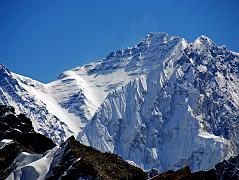
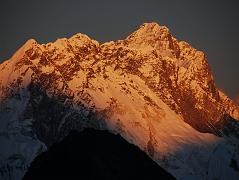
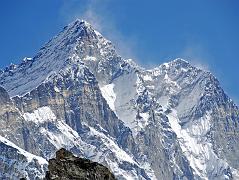
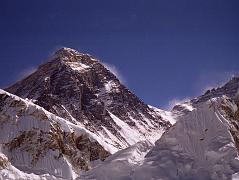
Links To My Youtube Lhotse Videos
Links To References
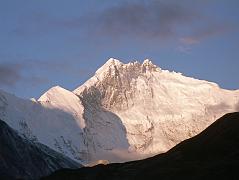

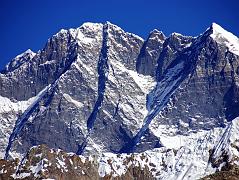
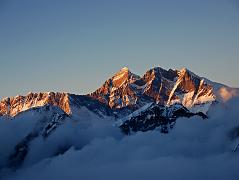
Updated: February 2010. Click on an image to see the FULL size with a caption.
To see all the photos please see separate sections on Mount Everest.
Lhotse (8516m) is the fourth highest mountain in the world, connected to Mount Everest via the South Col. Lhotse has two notable subsidiary peaks - Lhotse Middle at 8414m and Lhotse Shar (East) at 8383m. The name Lhotse comes from the Tibetan Lho meaning south and Tse meaning peak, so Lhotse means South Peak, the south peak of Mount Everest. Similarly, Nuptse means the west peak of Mount Everest and Changtse means the north peak of Mount Everest.
Most expeditions who climb Everest from Nepal have photos of the glacial blue ice on the 1125m Lhotse Face and the Lhotse summit area, rising only 610m from the South Col.
What makes Lhotse famous, however, is the tremendous steep rock and ice wall of the Lhotse south face. The south face has been the scene of many failed attempts, some notable fatalities like Jerzy Kukuczka in 1989, and very few ascents.


I trekked to the Everest Southwest Face and Lhotse in the Solu-Khumbu area of Nepal three times. In 1997, I flew to Lukla and trekked to Namche Bazaar, Tengboche, Dingboche, Chukung, Lobuche, and Kala Pattar.
In 2000, I flew to Lukla and trekked to Gokyo, Tengboche, Dingboche, Lobuche, Gorak Shep, and Everest Base Camp.
In 2008, I trekked from the Rolwaling Valley over the Tashi Lapcha pass to Thame, over the Renjo La to Gokyo, over the Cho La to Gorak Shep and to Kala Pattar, over the Kongma La from Lobuche to Dingboche, and back to Lukla.
In 1998 and 2005 we drove to the Everest North Face.
In 1998 we drove from Kathmandu to Kharta and trekked to the rarely visited Lhotse East Face and Everest Kangshung East Face.
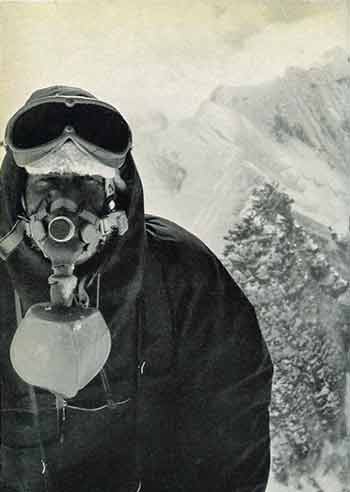
The first ascent of Lhotse Main was made by a Swiss expedition, with Ernst Reiss and Fritz Luchsinger reaching the Lhotse summit on May 18, 1956. The Swiss team also made the second summit of Everest by Ernst Schmied and Jurg Marmet on May 23 and Dolf Reist and Hansrudolf von Gunten on May 24.
Reiss: "On that savagely sculptured summit there was neither room to sit nor to put a rucksack down. We stood, holding on to the rim of the summit, looking at Everest's mighty south-western precipice and, near by, the rocky summit ridge of our own peak, plastered with ice crests and cornices."
After a solo climb claimed by controversial Tomo Cesen in spring 1990, a 20-member Soviet team for sure made the first ascent of Lhotse Main by the south face. Despite bad weather, avalanches, ice-covered rock and dangerously corniced ridges, Sergei Bershov and Vladimir Karatayev made it to the summit on October 16, 1990.
The first ascent of Lhotse Main in winter was made by Krzysztof Wielicki of Poland on December 31, 1988
The first ascent of Lhotse Shar was made by Zepp Maierl and Rolf Walter on May 12, 1979 via the South East ridge.
The first ascent of Lhotse Shar via the south face was made by a Czech-Slovakian team, with Zoltan Demjan reaching the summit on May 20, 1984 via the Southwest spur. Bozik, Josef Rakoncaj and Jaryk Stejskal reached the summit the following day.
The first ascent of Lhotse Middle was made on May 23, 2001 by Eugeny Vinogradsky, Sergei Timofeev, Alexei Bolotov and Petr Kuznetsov of a Russian expedition. They climbed from the South Col, traversed the slopes of northeast wall with a number of technical difficult sections before reaching the summit. On May 24 Nikolay Zilin, Gleb Sokolov, and Yuri Koshelenko made it to the summit, and on May 27 Vladimir Yanochkin and Viktor Volodin also made it.